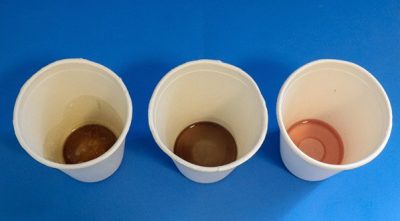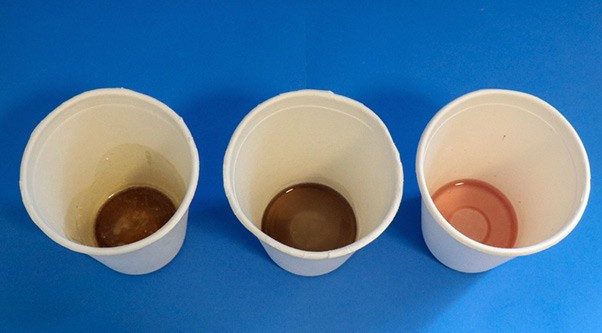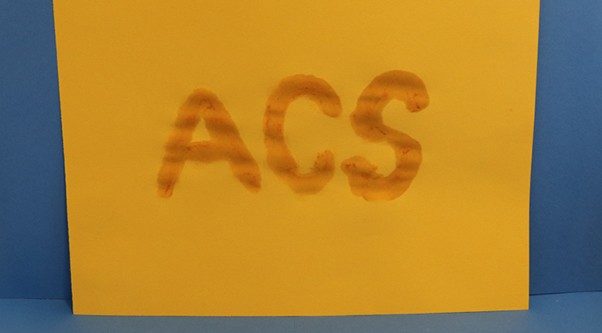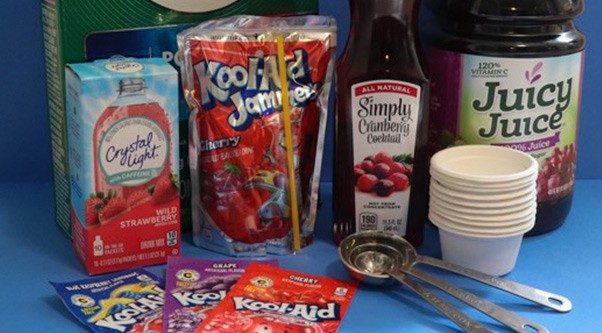Question to investigate
How can you make blueberry juice change colors?
Chemistry concepts
- Acids and bases are classes of materials that have different properties.
- Acid-base indicators change color depending on whether they are in acids or bases.
- Blueberries contain a substance called anthocyanin that changes color depending on whether mixed with an acid or a base.
Activity logistics
- Ages: As written, this activity is suited for ages 8–12.
- Time: 30 minutes–1 hour
Be safe
- Do not eat or drink any materials used in this activity.
- The berry juice can stain your hands, clothing, and surfaces.
- Wear safety splash goggles.
- Work with an adult.
- Read and follow all directions for the activity.
- Read all warning labels.
- Wear Personal Protective Equipment (PPE), such as goggles, safety glasses, or gloves.
- Tie back long hair, roll up sleeves, and secure loose clothing.
- Be sure to clean up and dispose of materials properly when you are finished with an activity.
- Wash your hands well before and after the activity.
Disposal: Dispose of all solid waste in the trash. The liquids can be safely disposed of down the drain with plenty of water.
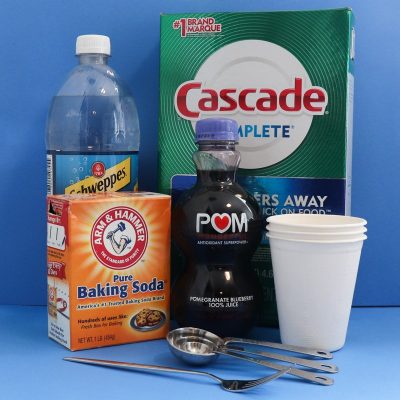
What you’ll need
- Powdered dishwasher detergent
- Blueberry juice or smashed blueberries
- Clear soda or vinegar
- Baking soda
- 3 small bowls or cups
- Measuring spoons
- Fork
Procedure
- If using fresh blueberries, smash about a dozen berries in a bowl with a fork. Add about a tablespoon of water and stir. Scoop out the solid parts and throw them away. If using blueberry juice or syrup, skip this step. Record the color below.
- Arrange three small bowls in a row. Add 1 tsp. water into each bowl.
- Add ¼ tsp. blueberry juice or blueberry syrup to each bowl. Stir carefully.
- Add 1 tsp. powdered dishwasher detergent or to the liquid in one bowl. Stir carefully.
- Add 1 tsp. baking soda to the liquid in a second bowl. Stir carefully.
- Add 1 tsp. clear soda pop or vinegar in the third bowl.
- Record your observations below.
What did you observe?
Answer the following questions as you do the experiement:
- What color is the blueberry juice or syrup before you add anything to it?
- What color is the liquid when you add dishwasher detergent to blueberry juice?
- What color is the liquid when you add baking soda to blueberry juice?
- What color is the liquid when you add clear soda or vinegar?
Download this worksheet to record your observations.
How does it work?
Chemists classify substances as acids or bases. Lemon juice and vinegar are both examples of acids. On the other end of the spectrum are bases. An example of a base is baking soda, which you might have used in the kitchen to make cookies and cakes. Many soaps are bases. Some substances are neutral, meaning they are neither an acid nor a base, like water.
Certain substances can help us tell whether something is an acid, a base, or neutral. Chemists call these substances acid-base indicators. Indicators change color depending on whether they are mixed with an acid or a base.
Blueberry juice—along with many other berries, fruits, and vegetables—contains a substance called anthocyanin that changes color depending on whether it is mixed with an acid or a base. Blueberry juice normally turns red or pink in an acid, blue in a mild base, and green in a more strongly basic solution, like dishwasher detergent.
Fun fact: Other plant parts such as red cabbage, red onion, red beets, red radish skin, purple grape juice, dark purple flowers, and turmeric change color when you add acids or bases.
Think about this…
Imagine that you accidentally spilled blueberry juice on your favorite white shirt. You know that blueberry juice will leave a stain. So, you change shirts and try to get the bright purple stain out of the white shirt. You sprinkle (or squirt) a little laundry detergent on the stain, add some water, rub the fabric, only to find the stain an even darker purple-blue color! What does this tell you about the laundry detergent?
This activity is adapted from an activity that originally appeared in the Celebrating Chemistry issue for National Chemistry Week 2015, written by Marilyn Duerst.

